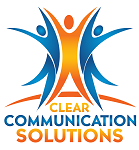
Suppose you are sitting in a meeting—this could be a PTA meeting, it could be a meeting with your boss and co-workers, it could be a meeting of volunteers for a community project—and someone ventures to propose an amendment to the approved plan of progress.
Eek. You say to yourself in your mind. Good luck with that. And you wait for the objections to be voiced.
But instead of objections, you hear someone say, “That’s just what we need—let’s do it!”
HUH? You say to yourself in your mind. You are alert now. Surely someone is going to stop this idea in its tracks.
The room has gone silent. You scan the people nearby—someone else is about say something.
“Yeah….we could try that.”
WHAT??
“Yes!” says the person who proposed the idea. “Everybody’s with me on this, right?”
What is happening, you think as you simply sit and smile with the other non-vocal participants.
What is beginning to happen is groupthink, a concept defined by Irving Janis, a social psychologist. Groupthink causes participants to conform to the consensus of the majority (or at least the dominant voices) because they don’t want to cause discomfort or aggravation among co-participants. Groupthink tends to be motivated by similarity rather than diversity and could potentially “dehumanize” other groups through stereotyping and the suppression of anything contrary to the dominant favored position. The expression of doubts or dissenting opinions are discouraged (source: www.psysr.org).
The effects of groupthink—even very mild suggestions of it, i.e. someone’s inability to speak up in a group situation for some reason or other—has had unfortunate results. For instance, analysts have speculated that cultural influences in several Korean airlines have caused miscommunications leading to aviation disasters.
The damaging effect of not speaking up is not always so tragic, but it can definitely lead to loss of productivity and efficiency. According to a VitalSmart study, when employees fail to raise concerns, it costs an average of $7500 in lost time and resources.
How much is lack of communication is costing you?
There are many ways to combat groupthink and foster an environment of open communication. Here are a few:
- Invite challenging viewpoints
- Assign a role of critical evaluator to a member
- Remain neutral or unbiased in conversation
- Have the leader speak last to avoid swaying the mood of the group
- Participate in ongoing training to keep the goal of transparency at the forefront
- Invite a neutral party on occasion to attend and challenge the view of the group
In other words: encourage authentic and effective communication. Now let’s be clear. Authentic communication does not ask you to assume the role of a belligerent, bellicose nay-sayer, which is not always a very effective approach. Rather, as Paul Meyer, writing for Success Magazine, states, “Authentic communicators understand themselves, and they understand what motivates others. They take into consideration basic communication styles and are willing to be flexible with their style to meet their goals, as well as to help others meet their goals.” (See also “The Power of Relationships” and “What Will Millennial Leadership Development Look Like in Three Years”).
Speaking at Standford University in 2011, Sheryl Sandberg (COO of Facebook) discusses the opportunities of a mentality that doesn’t push “truths” but rather allows the voicing of a variety of beliefs. As an aspect of authentic communication, she also stresses the importance of taking responsibility for ourselves and our actions.
Responding in ways that we think leaders want us to respond and not how we truly feel leads to a decrease in personal and team performance. This can lead to missed opportunities to effectively diagnose and troubleshoot ailments in the company, or opportunities for innovation. Taking initiative to foster inclusive and diverse ideas—rather than setting up an environment that elicits a particular response or agreement—leads to high performing cultures and teams.
